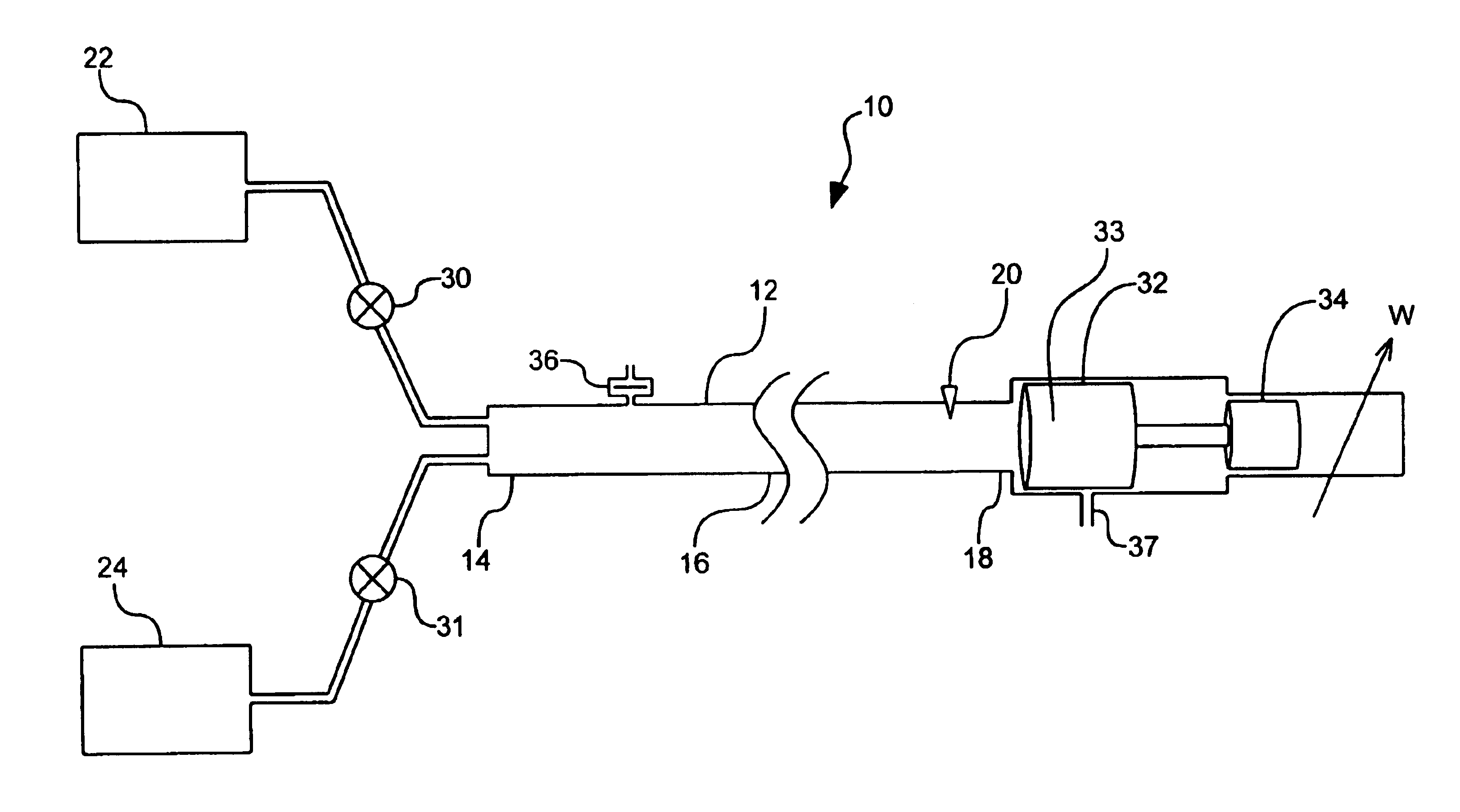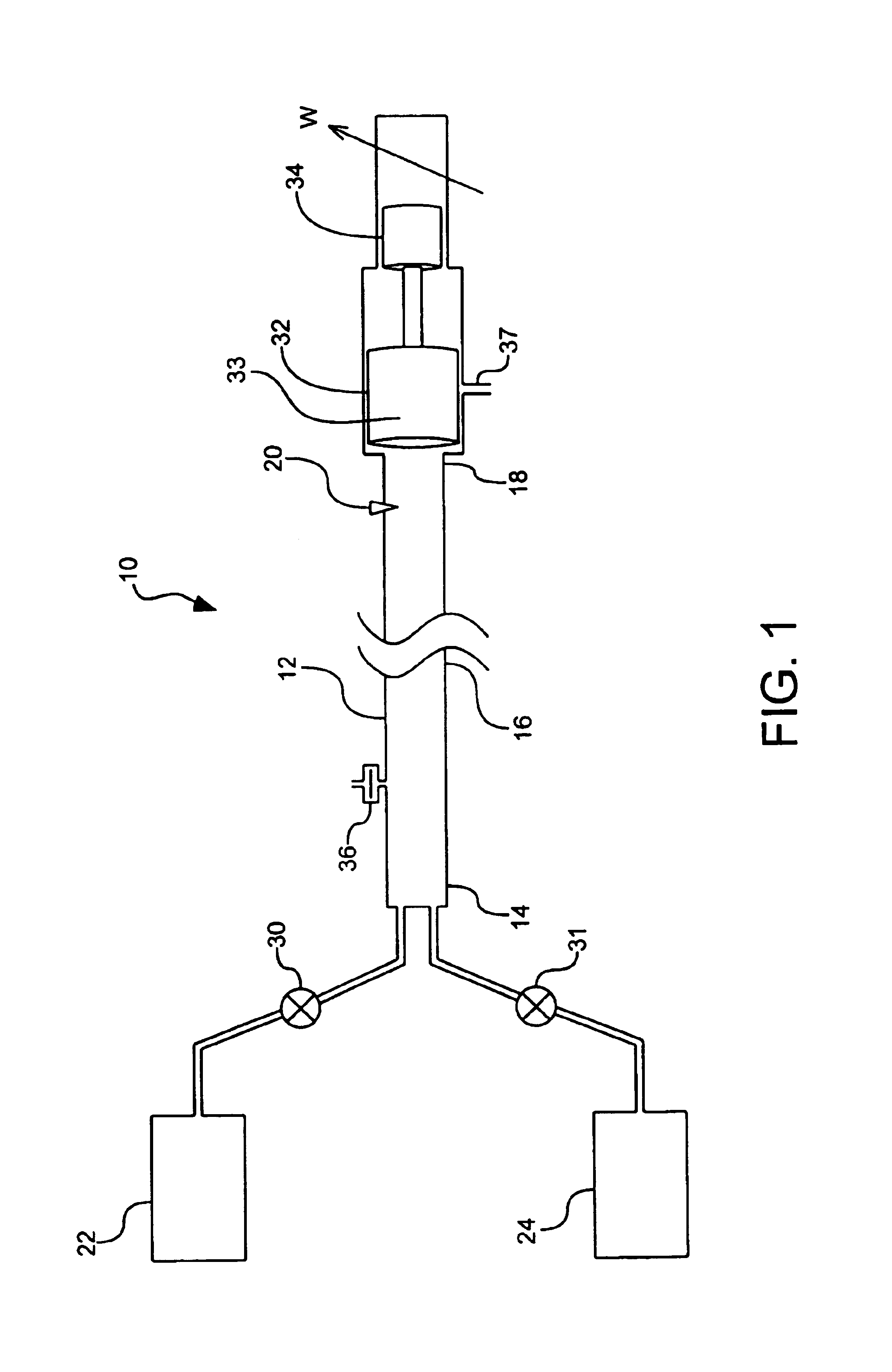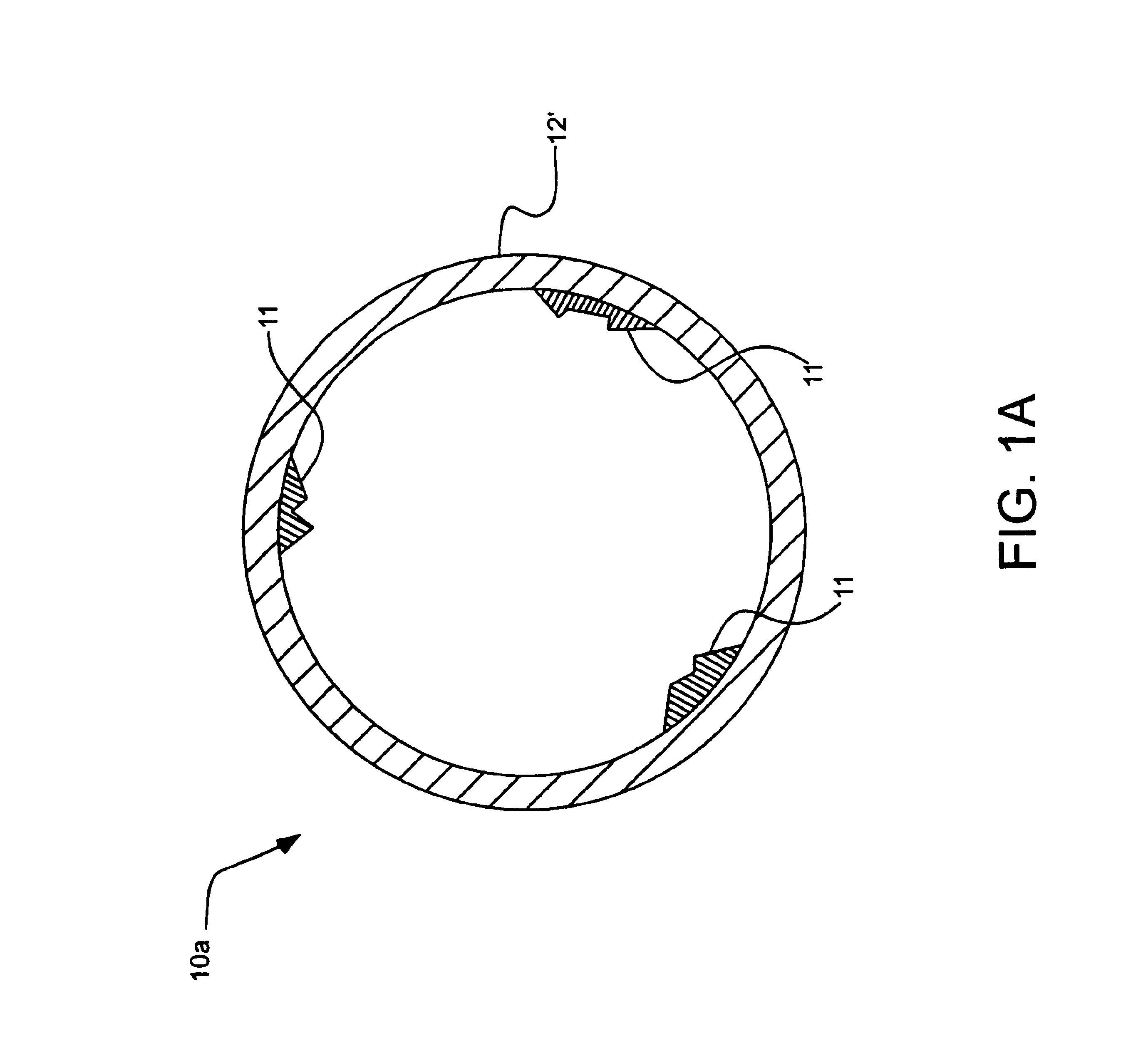Controllable combustion method and device
a controllable combustion and combustion method technology, applied in the direction of combustion types, machines/engines, lighting and heating apparatus, etc., can solve the problems of high pollution, inefficiency of most internal combustion engines, and loss of a great deal of energy produced by combustion, so as to reduce and simplify the energy conversion steps, reduce the effect of high bandwidth and fast energy extraction
- Summary
- Abstract
- Description
- Claims
- Application Information
AI Technical Summary
Benefits of technology
Problems solved by technology
Method used
Image
Examples
Embodiment Construction
[0050]Reference will now be made to the exemplary embodiments illustrated in the drawings, and specific language will be used herein to describe the same. It will nevertheless be understood that no limitation of the scope of the invention is thereby intended. Alterations and further modifications of the inventive features illustrated herein, and additional applications of the principles of the inventions as illustrated herein, which would occur to one skilled in the relevant art and having possession of this disclosure, are to be considered within the scope of the invention.
[0051]As illustrated in FIG. 1, a combustion system, indicated generally at 10, in accordance with the present invention is shown for providing controllable combustion of a combustible material. In accordance with one aspect of the present invention, the system 10 includes a combustion chamber or tube 12 that can include an extinguishing or inlet section 14, an ignition section 18, and a combustion section 16 int...
PUM
 Login to View More
Login to View More Abstract
Description
Claims
Application Information
 Login to View More
Login to View More - R&D
- Intellectual Property
- Life Sciences
- Materials
- Tech Scout
- Unparalleled Data Quality
- Higher Quality Content
- 60% Fewer Hallucinations
Browse by: Latest US Patents, China's latest patents, Technical Efficacy Thesaurus, Application Domain, Technology Topic, Popular Technical Reports.
© 2025 PatSnap. All rights reserved.Legal|Privacy policy|Modern Slavery Act Transparency Statement|Sitemap|About US| Contact US: help@patsnap.com



